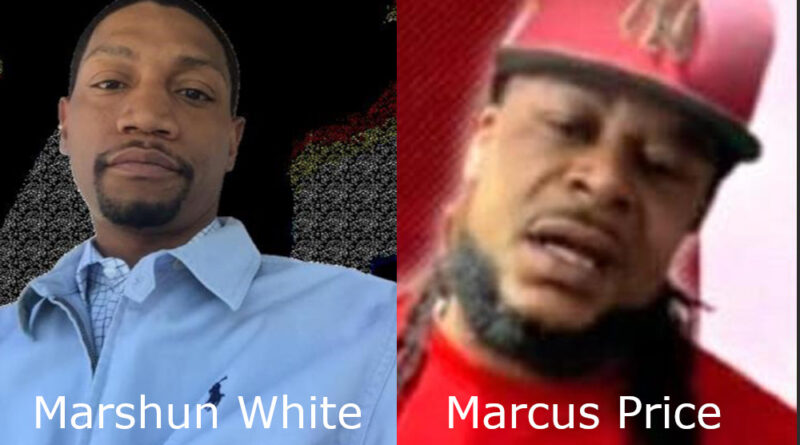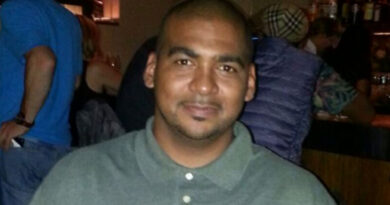The Unsolved Murders of Marshun White and Marcus Price in St. Louis Missouri
In the early hours of September 19, 2024, a quiet stretch of the Kingsway East neighborhood in St. Louis, Missouri, became the scene of a carefully timed and deadly attack. Two friends, Marshun White, age 42, and Marcus Price, age 34, sat outside their apartment building on North Kingshighway Boulevard, unwinding as many neighbors often do on late summer nights. Within moments their lives were taken, and a calm block awoke to sirens, flashing lights, and questions that still demand answers.
The Men Behind the Names
Friends and relatives describe Marshun White and Marcus Price as familiar faces on their block. They were the kind of residents who waved to passersby, traded small talk at the corner store, and knew the rhythms of their neighborhood. Marshun carried himself with a steady calm, a man who favored routine and family. Marcus was known for a quick smile and a willingness to lend a hand when someone needed a ride or a favor. Their shared space outside the building had become a small porch of community life, a place where short chats turned into long conversations about work, sports, and weekend plans.
Both men were St. Louis through and through. They knew the city’s triumphs and its struggles, and like many who grow up in close knit neighborhoods, they had learned to spot trouble quickly. On that September night, however, the danger that came for them was deliberate, patient, and, according to investigators, prepared well in advance.
The Setting and the Approach
North Kingshighway Boulevard is a wide artery that cuts across several neighborhoods, a route where city buses hiss to a stop and the rumble of traffic never fully fades. The building where Marshun and Marcus lived sits near a line of mature trees and low fences. Streetlamps cast cones of light that pool across the sidewalks and the parked cars. Before the shooting, surveillance cameras captured scenes that now matter tremendously to the investigation. The footage suggests that two people arrived in the area and lingered, moving just enough to avoid drawing attention while keeping the entrance of the building in sight.
Investigators believe the suspects watched their targets for more than an hour. That kind of waiting suggests familiarity, comfort with the area, and a willingness to risk being seen in order to strike at a specific moment. It also hints at scouting, because anyone lingering that long on a quiet block risks a stare from a resident, a passing police cruiser, or a camera lens.
The Moment of Violence
Shortly after three in the morning, the attack unfolded. The suspects closed distance at a run, moving from the edge of the sidewalk toward the front of the building. Marshun and Marcus were still seated when gunfire cracked the stillness. Echoes carried down the boulevard and across the small front lawns that line the block. The shooters did not linger. As quickly as they emerged, they retreated, sprinted back toward the street, and disappeared into a waiting vehicle.
Witnesses would later recall a dark sport utility vehicle, the kind of model that blends easily into city traffic. In those minutes every detail mattered, from the angle of the headlights to the sound of tires rolling off the curb. The vehicle headed away before the first callers reached emergency dispatchers, leaving behind two men whose lives could not be saved despite a rapid police response.
First Response and the Scene
Patrol officers and emergency medical personnel reached the address within minutes. They found Marshun and Marcus gravely wounded outside the building where they had taken their seats earlier that night. The sidewalk and a small patch of grass were quickly cordoned off with tape as the first responders shifted from rescue to preservation of evidence. Shell casings, trajectories, and camera angles became the language of the early morning hours.
Neighbors, roused from sleep by shots and sirens, gathered behind the tape with worried faces. Some whispered names. Others stared at the ground or clutched phones. A familiar gathering spot had turned into a scene of loss, and the ordinary details of the block felt suddenly fragile.
What the Evidence Suggests
The length of the surveillance period is the clearest clue. Waiting more than an hour indicates intent, planning, and confidence. The suspects did not arrive by chance, and they did not act in a moment of heat. Their approach from off camera to on camera and then into view of the building entrance shows they knew where to go and what to look for. The escape in a dark sport utility vehicle points to a driver who either participated directly or stood ready on a nearby side street.
Forensic specialists would compare ballistics from recovered casings to regional databases, checking for prior cases that used the same firearm. Detectives would canvass nearby homes and businesses for additional video, hoping to capture a passing reflection in a storefront window or the brief flare of brake lights at an intersection camera. In modern investigations, the path of a vehicle through a city can sometimes be traced by fragments of footage, and what begins as a single blurry clip can become a breadcrumb trail.
The Human Cost
Beyond the metrics of video timelines and caliber analysis is the burden borne by the families and friends of the victims. Funerals came too soon for both men, and the routines of the block shifted. The empty chair on the stoop, the silenced phone that once lit up with quick messages, the quiet after dinner that used to hold conversation and laughter, all became reminders of what was taken. When violence is precise and planned, those who grieve often wrestle not only with loss but with the knowledge that someone watched their loved ones and chose a moment to end their lives.
The Role of the Community
St. Louis neighborhoods are resilient, and investigations like this often turn on community trust. Tips assemble into patterns. A driver mentions an unusual car moving slowly after midnight. A resident recalls men lingering near a laundromat before walking toward the block. Someone recognizes a gait, a jacket, or the way a person holds a phone. On their own such details seem small, but together they can draw a path from the scene of the crime to a name.
Investigators need more than a single witness. They need the cumulative memory of the block. Doorbell cameras, driveway cameras, even footage from a porch across an alley can widen the lens. The suspects stayed in the area for a long time before the attack, and that length of time multiplied the number of places where video might hold their image.
The Vehicle of Interest
The escape in a dark sport utility vehicle remains one of the most concrete pieces of the case. Vehicles are rarely invisible to a city. They pass through intersections timed by traffic sensors. They park beneath cameras mounted on businesses that remain closed overnight. They refuel. They pick up and drop off passengers. Even the wear pattern on tires can be distinctive if a close encounter leaves a mark on curbside asphalt or a shallow rut in a dirt alley. Reconstructing the vehicle’s path requires patient work, but each camera that captured its outline could narrow the window of time and direction of travel.
Why Patience Matters in a Case Like This
A planned attack often reflects a network. That network might be only two people who share intent and transportation, or it could extend to others who provided cover, information, or a place to lie low. Patience by investigators allows small facts to be tested against larger patterns. Cell site activity, vehicles seen near the location on prior nights, social ties between potential persons of interest and the victims, and any prior conflicts can intersect in useful ways. The long surveillance before the shooting suggests that the suspects felt confident about their ability to wait. That confidence, in turn, can reveal habits and routes that are hard to hide forever.
Remembering Marshun White and Marcus Price
Most stories about violent crime risk becoming dominated by the moment of violence. To honor the lives of Marshun White and Marcus Price, their community continues to speak about who they were before that night. They were sons, friends, and neighbors. They spent ordinary time on a small patch of concrete that belongs to the life of any city. The best answer to a planned act of harm is a planned act of remembrance and collective action. When residents keep telling their stories, when they keep eyes open, and when they bring every small detail forward, they build the pressure that every unsolved case needs.
A Call for Information
Every major case advances through both science and community help. If you lived near North Kingshighway Boulevard on September 19, 2024, or passed through the area in the hours before dawn, your memory and any video you hold could matter. The timing after three in the morning might have coincided with a commute, a late shift, or a quick stop for food or gas. Even small observations can tighten a timeline and strengthen a lead. The families of Marshun White and Marcus Price deserve the clarity that comes with accountability, and the city benefits when those who plan violence learn that patience will be matched by persistence.
The Work Ahead
Investigations like this can take time, but time can also favor the truth. People talk. Vehicles are sold. Phones are upgraded. Cameras are replaced, but old memory cards are sometimes saved in drawers. A record that seemed unimportant becomes vital when viewed next to new evidence. As months pass, the circle of silence that often surrounds a planned attack can fray, creating the opportunity for a tip that breaks a case open. The work continues because it must. Two lives were taken on a quiet block, and the best measure of respect is a sustained effort to find whoever planned and carried out the attack.
Closing Reflection
On September 19, 2024, St. Louis lost two of its own to a calculated act that violated the peace of an ordinary city night. What remains is a promise that their names will not be overshadowed by the anonymity of those who struck and fled. The memory of Marshun White and Marcus Price is carried now by family, friends, and neighbors. It is also carried by the investigators who review footage frame by frame, by the technicians who test each piece of physical evidence, and by the citizens who refuse to let the story fade. Justice in a case like this is not only a verdict in a courtroom. It is the collective refusal to accept silence as an ending.
Discover more from City Towner
Subscribe to get the latest posts sent to your email.




